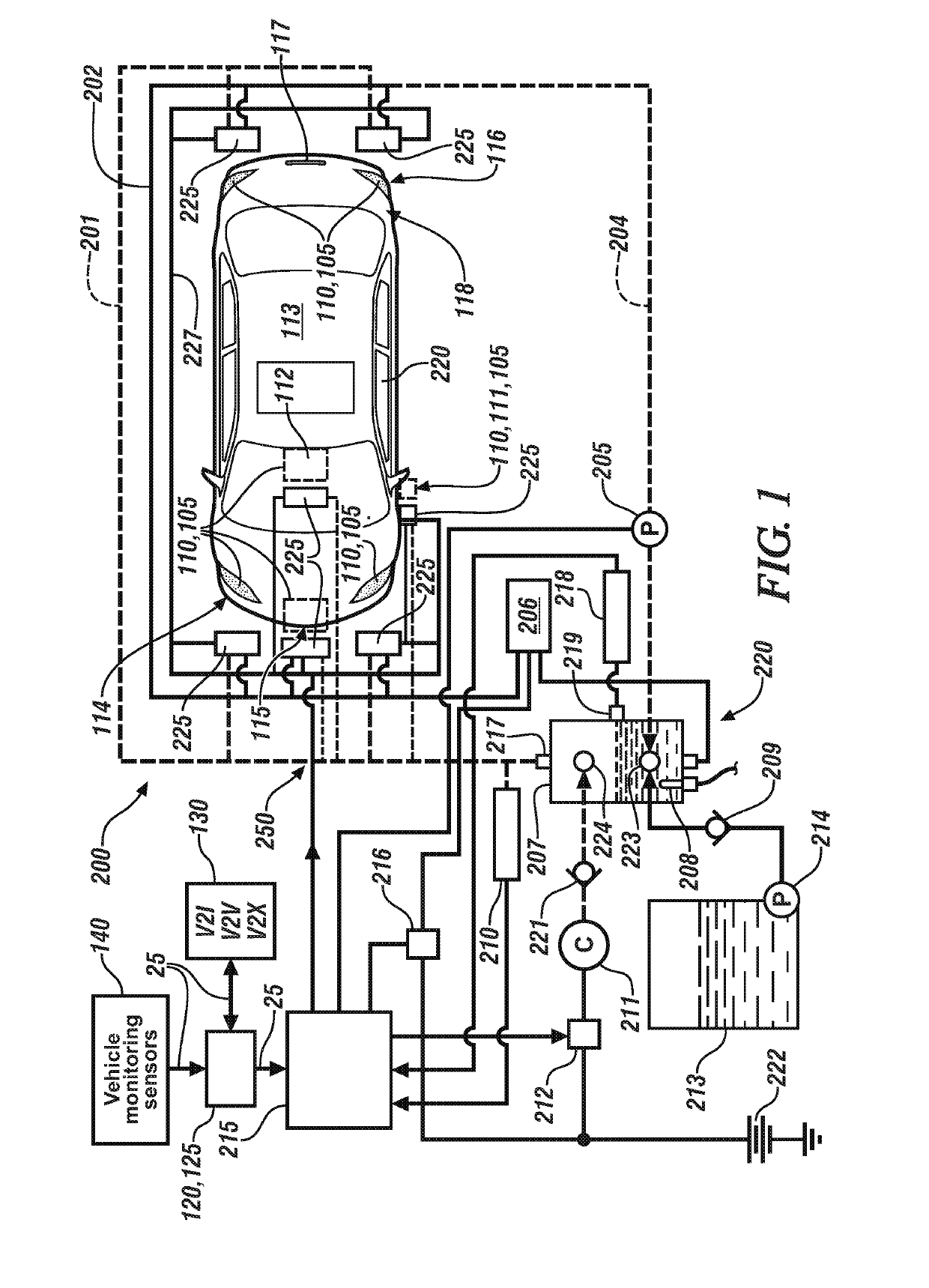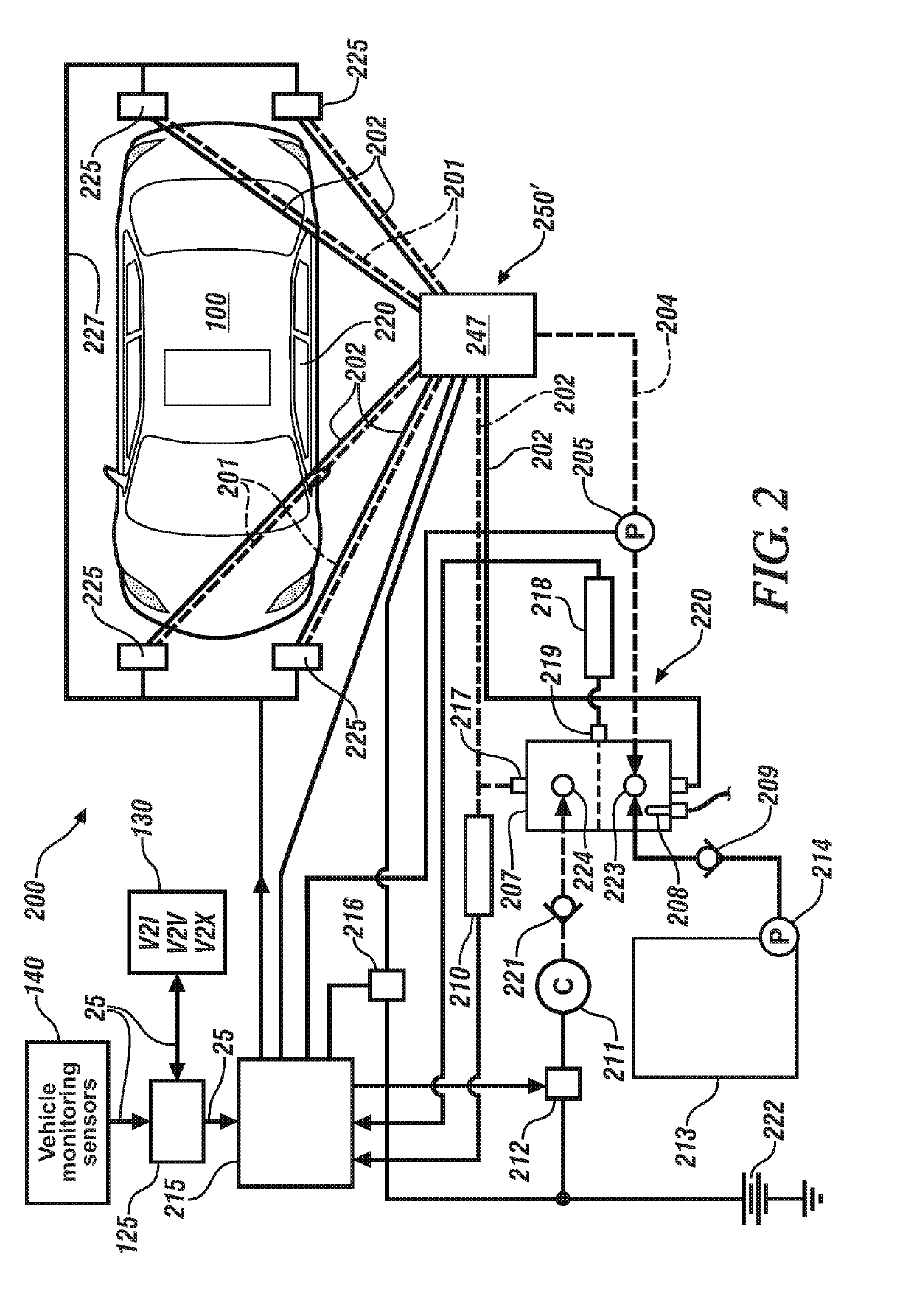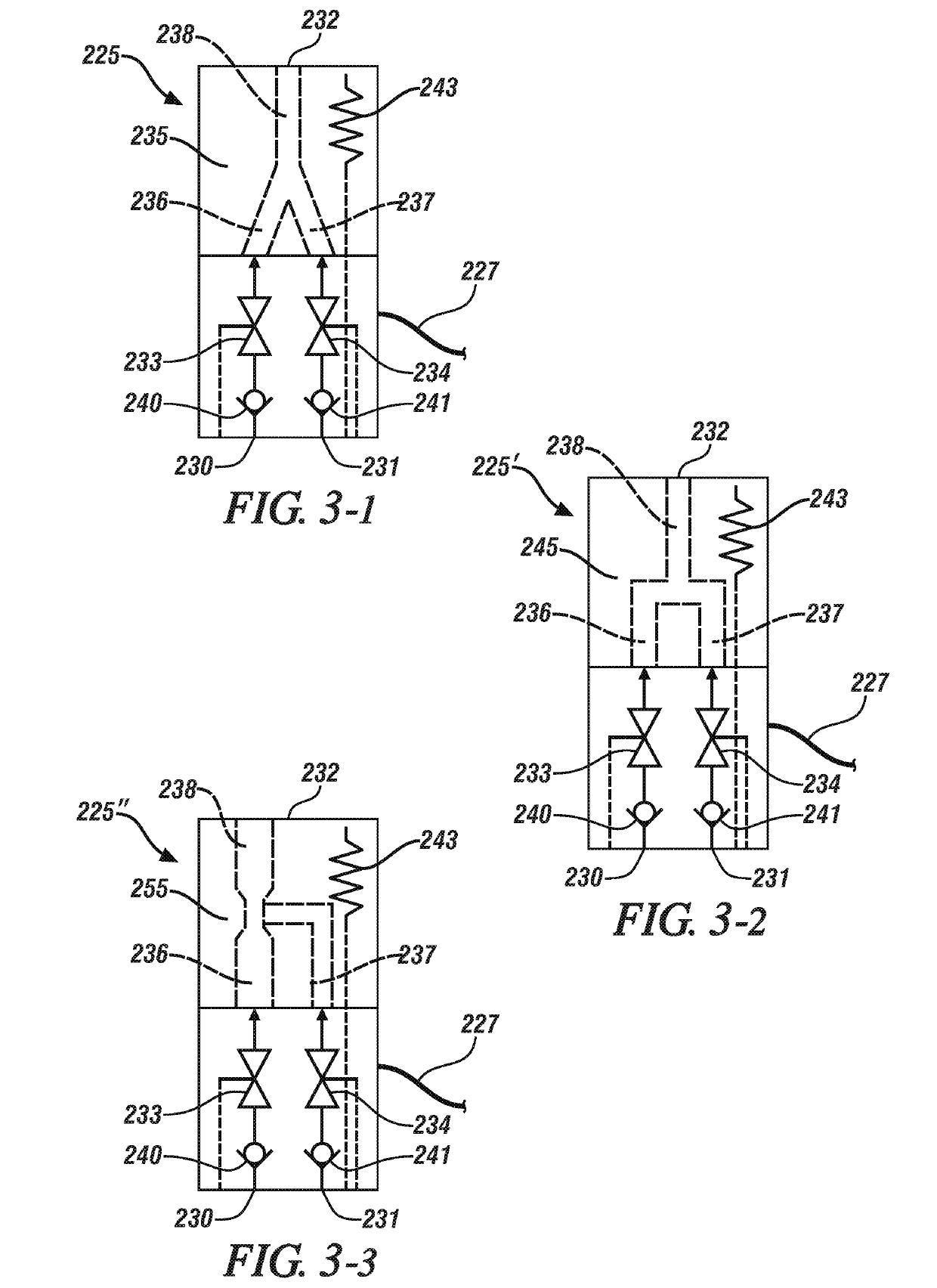Method and apparatus to dispense fluid onto a target area of a surface
a surface and target area technology, applied in the field of methods and, can solve the problems of reducing the effectiveness of the spatial sensing device, affecting the ability to monitor a field of view, and reducing the ability to perform dynamic object detection
- Summary
- Abstract
- Description
- Claims
- Application Information
AI Technical Summary
Benefits of technology
Problems solved by technology
Method used
Image
Examples
first embodiment
[0044]the fluid dispensing system 200 including a first fluidic distribution system 250 is shown with reference to FIG. 1 and FIGS. 4-1, 4-2, and 4-3, and includes the pressure vessel 207, which is fluidly connected to the compressed air source 211. In one embodiment, the pressure vessel 207 includes a liquid reservoir portion, with a liquid port that fluidly connects via the first fluidic distribution system 250 to distribute liquid to each of the mixing valves 225 and an air port 217 that fluidly connects via the first fluidic distribution system 250 to distribute pressurized air to each of the mixing valves 225. A heat source 208 may be disposed in the pressure vessel 207 to heat any fluid disposed therein. Alternatively, the heat source 208 may include engine or transmission coolant, battery pack coolant, or solar energy collector that is thermally coupled to the liquid or air of the system to transfer heat. In one embodiment, the compressed air source 211 is a stand-alone air c...
second embodiment
[0050]FIG. 2 schematically shows the fluid dispensing system 200, wherein the pressurized fluidic supply system 220 fluidly connects via a second fluidic distribution system 250′ to the mixing valves 225. In this embodiment, the first fluidic conduits 201 and second fluidic conduits 202 fluidly connect a manifold 247, which distributes air and liquid individually to each of the mixing valves 225 via first fluidic conduits 201 and second fluidic conduits 202.
[0051]FIG. 3-1 schematically shows a first embodiment of the mixing valve 225, which includes a mixing portion 235 that is fluidly connected to a first valve conduit 236 and a second valve conduit 237. The mixing portion 235 terminates at an outlet orifice 232 that is proximal to one of the aforementioned target areas on the vehicle 100. The first valve conduit 236 includes a first inlet 230 that is fluidly connected to a first check valve 240 that is disposed upstream of a first control valve 233, which is fluidly connected to t...
third embodiment
[0054]FIG. 3-3 schematically shows the mixing valve 225″, which includes a mixing portion 255 that is fluidly connected to the first valve conduit 236 and the second valve conduit 237. In this embodiment, the mixing portion 245 is configured such that the first valve conduit 236 and the second valve conduit 237 join together in a venturi configuration to effect mixing of the pressurized liquid and air into the single conduit 238 that terminates at the outlet orifice 232.
[0055]The term “controller” and related terms such as control module, module, control, control unit, processor and similar terms refer to one or various combinations of Application Specific Integrated Circuit(s) (ASIC), electronic circuit(s), central processing unit(s), e.g., microprocessor(s) and associated non-transitory memory component(s) in the form of memory and storage devices (read only, programmable read only, random access, hard drive, etc.). The non-transitory memory component is capable of storing machine...
PUM
 Login to View More
Login to View More Abstract
Description
Claims
Application Information
 Login to View More
Login to View More - R&D
- Intellectual Property
- Life Sciences
- Materials
- Tech Scout
- Unparalleled Data Quality
- Higher Quality Content
- 60% Fewer Hallucinations
Browse by: Latest US Patents, China's latest patents, Technical Efficacy Thesaurus, Application Domain, Technology Topic, Popular Technical Reports.
© 2025 PatSnap. All rights reserved.Legal|Privacy policy|Modern Slavery Act Transparency Statement|Sitemap|About US| Contact US: help@patsnap.com



